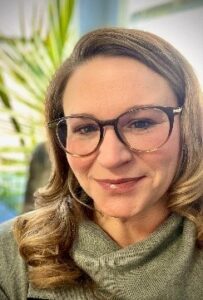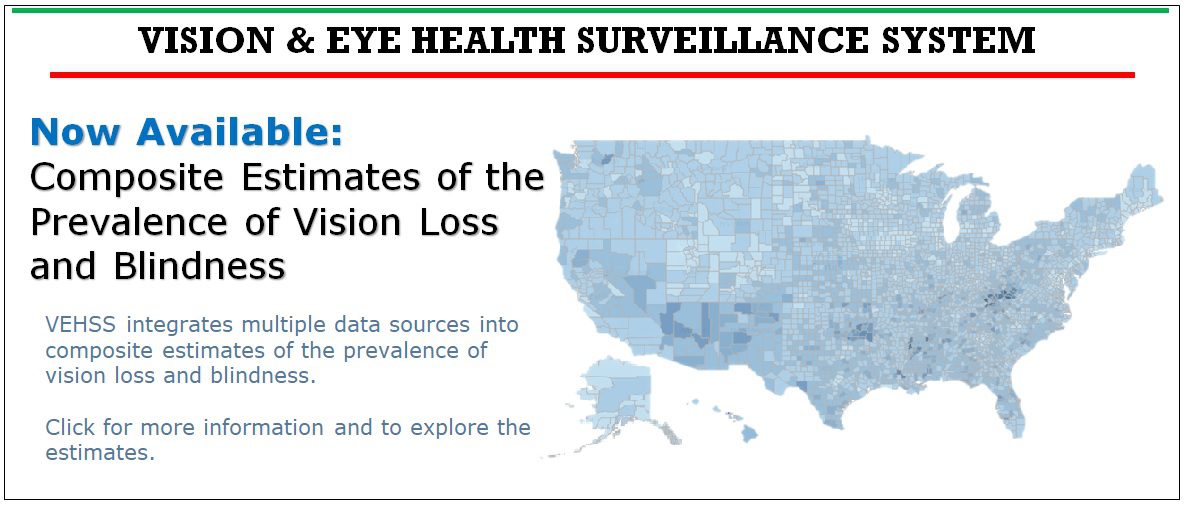Virtual Workshop: Public Health and Research Applications of the CDC’s Vision and Eye Health Surveillance System (VEHSS)
Prevent Blindness hosted a virtual workshop on November 4, 2021, about public health and research applications of the CDC’s Vision and Eye Health Surveillance System (VEHSS). The focus of the workshop was using the CDC’s VEHSS and discussing how the data can be leveraged for use in public health research and programs.
Presentations
- Vision and Eye Health Surveillance, Joshua Ehrlich, MD, MPH
- CDC’s Vision and Eye Health Surveillance System (VEHSS), Elizabeth Lundeen, PhD, MPH
- Understanding and Using VEHSS to Access Vision and Eye Health Prevalence Information, John Wittenborn, NORC at the University of Chicago
- Significance of VEHSS Data in Informing Public Health Practice and Policy, David Rein, NORC at the University of Chicago
Speaker Biographies
Joshua R. Ehrlich, MD, MPH, University of Michigan

Dr. Joshua Ehrlich is an Assistant Professor in the Department of Ophthalmology and Visual Sciences and the Institute for Social Research at the University of Michigan. He is also a Visiting Scientist at the CDC, where he works with the Vision Health Initiative. Dr. Ehrlich is a fellowship trained glaucoma specialist and researcher focused on population vision health in the U.S. and globally. His research is interdisciplinary, drawing on epidemiology, demography, health services research, and clinical insights to characterize and address the impact of vision impairment on health, disability, economics, and wellbeing, particularly among older adults.
Elizabeth Lundeen, PhD, MPH, Vision Health Initiative, U.S. Centers for Disease Control and Prevention

Dr. Elizabeth Lundeen is a Senior Scientist in the Vision Health Initiative at the U.S. Centers for Disease Control and Prevention (CDC). She manages the development of CDC’s Vision and Eye Health Surveillance System and leads epidemiological and health services research on vision health and eye diseases. The Vision Health Initiative is located within CDC’s Division of Diabetes Translation, and Dr. Lundeen’s research has focused on diabetic retinopathy.
Dr. Lundeen’s interests also include the social determinants of health, health disparities, machine learning, and the use of electronic health record data to conduct population health research. She came to CDC as an Epidemic Intelligence Service officer in 2015 and completed her fellowship in the Division of Nutrition, Physical Activity, and Obesity. She began her public health career by spending five years working for the Swiss Red Cross in Kyrgyzstan working with village health committees and implementing a home fortification program to address childhood anemia. Dr. Lundeen received her MPH in health policy from Yale School of Public Health and PhD in nutritional epidemiology from Emory University.
John Wittenborn, NORC at the University of Chicago

John Wittenborn is a research data scientist in the Public Health Analytics program at NORC at the University of Chicago. His background is in health economics, burden of illness and surveillance with a particular interest in visual health. He is currently serving as the Project Director for the Vision and Eye Health Surveillance System.
David B. Rein, PhD, MPA, NORC at the University of Chicago

Dr. David Rein is the Director of NORC’s Public Health Analytics Program and the Principal Investigator for CDC’s Vision and Eye Health Surveillance System (VEHSS). Dr. Rein is a health services researcher with a specialization in public health policy. He has worked on projects studying the epidemiology and economics of vision-threatening conditions since 2003.
Kira Baldonado, MPH, Prevent Blindness

Kira Baldonado is the Vice President of Public Health and Policy for Prevent Blindness. She is responsible for the mission-based work of the organization, focusing on program outreach, education, and policy directives. Kira, and her team of seven staff members are working to improve our nation’s vision and eye health system by leading consensus-driven initiatives, creating accountability and improved surveillance for vision, while reducing disparities in each step of the continuum of vision care.

